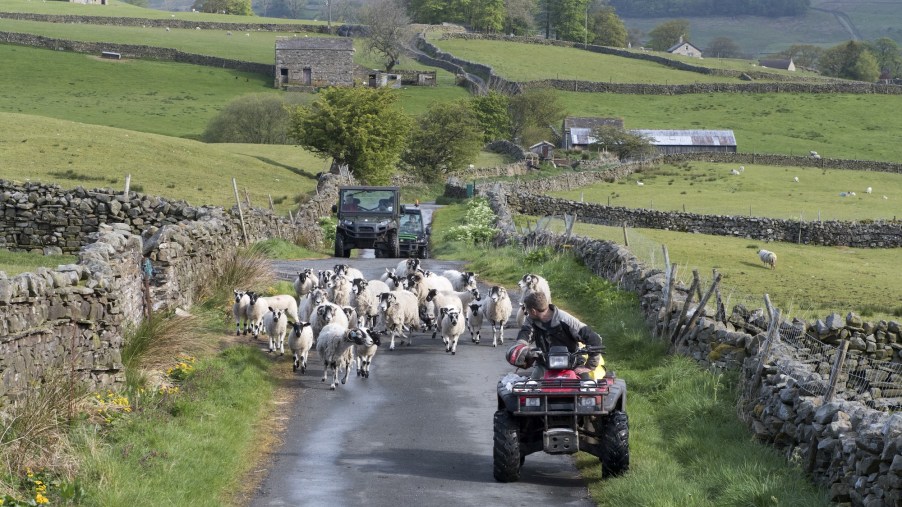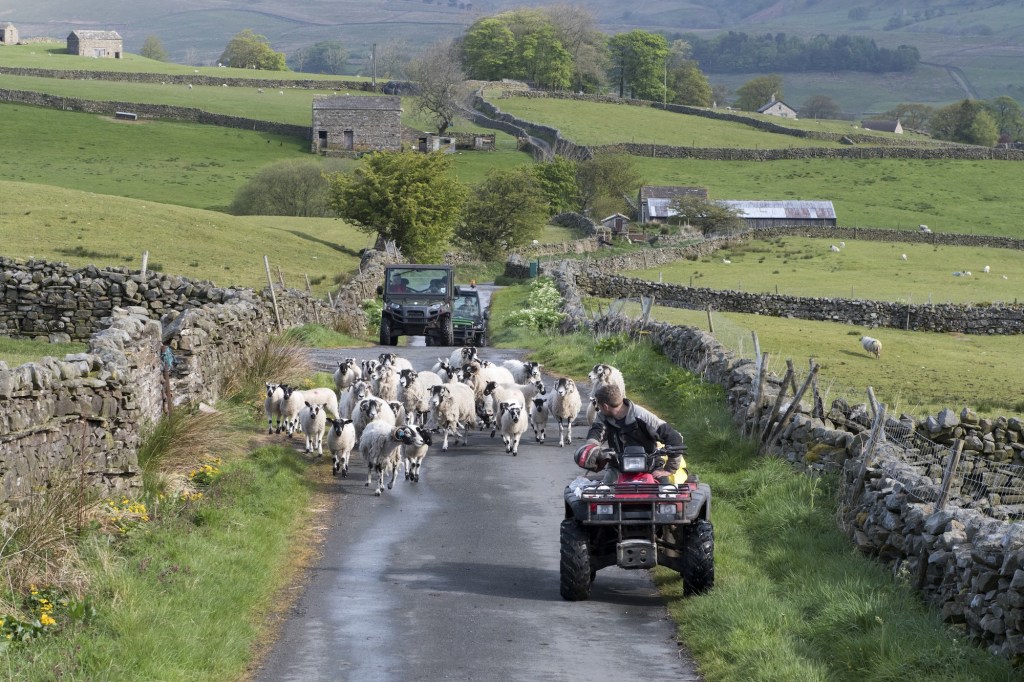
Do Cowboys Use ATVs?
The typical depiction of a cowboy features a stoic man on a trusty steed. Cowboys and horses are a classic pair not only in Westerns but also on real-life ranches and farms. But recently, modern cowboys have left their horses in the stable in favor of ATVs to complete everyday ranch duties, and for good reasons.
The many uses of ATVs

ATVs have made their way onto farms, taking the place of horses and even pickup trucks and tractors for all kinds of tasks. Modern ranches use four-wheelers for herding cattle, mending damaged fences, feeding and providing water for cattle, and herding and controlling steer, The Seattle Times reports.
Quads quickly transport the operator to even remote areas. They can also carry tools or equipment on-site to make regular repairs.
Cowboys use ATVs for herding
In the past, cowboys scoffed at the arrival of pickup trucks for tasks on the ranch. Today, modern cowboys see the value in using ATVs for herding cattle and horses. Amid the sprawling landscapes, cattle must be brought back home from the pasture. Four-wheelers provide quick work of wrangling stragglers and outliers to return them to the herd.
Some ranchers still use horses to complete tasks like herding cows, but as The Seattle Times explains, quads are gradually pushing horses out. Some ranchers use both ATVs and horses.
The benefits of four-wheelers on farms and ranches
ATVs have a distinct benefit because they don’t require the same level of care as an animal like a horse, so they’re a significant time-saver. Since all-terrain vehicles only require the rider to hop on and turn a key, they prove useful in various situations.
According to PennState Extension, ATVs went from being introduced and marketed in the 1970s as fun toys to becoming useful replacements in agriculture. ATVs and UTVs can access areas that pickup trucks or horses can’t and even expedite regular walking tasks.
Besides accessing off-road areas, four-wheelers are also cost-effective. The Seattle Times reports that cowboys and ranchers spend about a third less on an ATV than a well-trained horse. Since ranches and agricultural businesses have had to make adjustments and employ fewer ranch hands and helpers, quads make financial sense.
Plus, horses need care and management. A rider cannot simply hop on and go. The horse must be shoed, saddled, and otherwise prepared for a ride. Afterward, the horse needs to be brushed and bathed. There is, of course, the added expense of feeding and stabling horses. Although ATVs need maintenance, it’s less frequent and arguably less expensive to maintain one.
Four-wheelers are a time saver, too, because they’re faster than walking or even driving a pickup truck to certain areas of a ranch. They are great for towing payload, riding out to access all kinds of livestock, and moving dirt, PennState Extension explains.
There’s also the added benefit of ATVs having less of a learning curve than horses. While a person riding a horse needs training and experience to know how to handle and cope with reactions from the animal, the same is not true for quads. They also sit lower to the ground and are less fickle than horses. Not only that, but PennState Extension says ATVs also help people with mobility issues or injuries easily tend to their farm or ranch.


